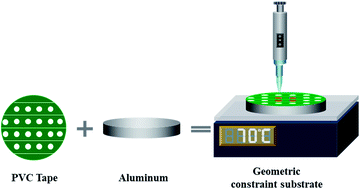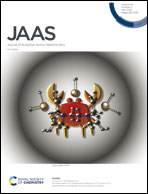Stability and accuracy improvement of elements in water using LIBS with geometric constraint liquid-to-solid conversion
Abstract
Poor spectral stability and low detection accuracy have limited the development of laser-induced breakdown spectroscopy (LIBS) for use in liquid analysis. A simple and fast new liquid pretreatment method, named geometric constraint liquid-to-solid conversion (GCLSC), was used in sample pretreatment for LIBS to simultaneously improve the spectral stability and detection accuracy. An aluminum (Al) target was used as a substrate. Boron (B) and chromium (Cr) in aqueous solution were determined using LIBS with GCLSC. The results showed that the spectral stability and detection accuracy of LIBS in liquid analysis could be improved by using GCLSC when compared with using filter paper assisted liquid-to-solid conversion (FPLSC) and unconstrained direct liquid-to-solid conversion (UDLSC). The relative standard deviation (RSD) values of B and Cr from the GCLSC method were 6.8% and 4.6%, respectively. The root-mean-square error of cross validation (RMSECV) values of B and Cr for GCLSC were 2.09 mg L−1 and 1.63 mg L−1, respectively. The experimental results demonstrated that the GCLSC method is promising for improving the stability and accuracy of LIBS quantitative analysis in liquid detection.



 Please wait while we load your content...
Please wait while we load your content...